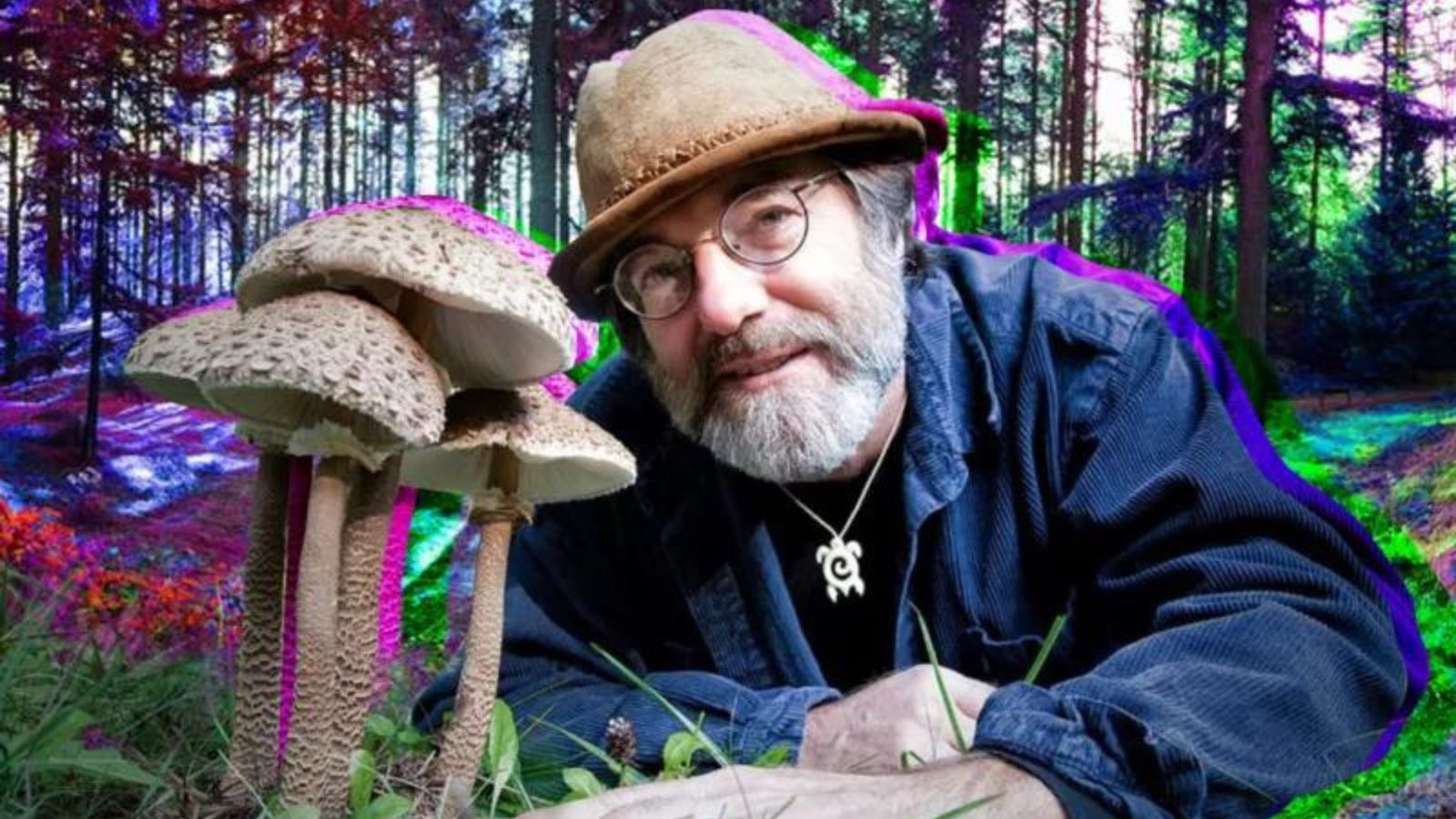The renowned mycologist, Paul Stamets, has been honored with a new species of magic mushroom that bears his name. The mushroom was recently discovered by a group of researchers in Los Angeles and has been named Psilocybe stametsii in recognition of his pioneering work in the field of mycology.
Who is Paul Stamets?
Paul Stamets is a mycologist and entrepreneur who has devoted his life to studying fungi and their applications in medicine, bioremediation, and sustainable agriculture. He has been called “a pioneer in the field of mycology” and “the Indiana Jones of fungi” for his work in discovering new species of mushrooms and exploring their potential uses.
Stamets has authored several books on the subject, including Mycelium Running: How Mushrooms Can Help Save the World, which has been described as a must-read for anyone interested in the future of our planet. In this book, he explains how mushrooms can be used to clean up oil spills, filter polluted water, and even cure diseases.

A Fantastically Fungi-centered Career
Stamets has also founded several companies dedicated to the development of mushroom-based products. One such company is Fungi Perfecti, which he founded in 1980 and which has since become one of the leading suppliers of mushroom products in the world. The company produces mushroom spawn, mycological tools and supplies, and a variety of mushroom-based dietary supplements.
In addition to his work with Fungi Perfecti, Stamets has also founded several other companies that focus on the use of fungi in medicine and bioremediation. One such company is MycoMedicinals, which produces mushroom-based supplements for immune support, and another is Earth Repair, which is dedicated to the use of fungi in environmental restoration.
Stamets is a passionate advocate for the use of mushrooms in bioremediation and has conducted extensive research into their potential uses in cleaning up toxic waste and pollutants in the environment. He has also been a vocal advocate for the use of mushrooms in medicine and has conducted research into their potential therapeutic benefits in the treatment of conditions such as cancer, Alzheimer’s disease, and depression.
Stamets is a firm believer in the potential of mushrooms to help solve some of the world’s most pressing problems, and he has been quoted as saying:
“Mushrooms can be the agents of transformation we need for the ecological regeneration of our planet. They have the proven capacity to break down toxic chemicals, pollutants, and pathogens. They can create habitats for other beneficial plants and animals. And they are tasty, nutritious, and medicinal.”
Stamets’ work in the field of mycology has earned him numerous awards and honors, including the National Geographic Adventure Magazine’s Green-O-Vator award, the Mycological Society of America’s Gordon and Tina Wasson award, and the North American Mycological Association’s Gary Lincoff Award for Contributions to Amateur Mycology.
The discovery of Psilocybe stametsii is a testament to the importance of Stamets’ work and his contributions to mycology. The mushroom is a new species of magic mushroom that contains the psychoactive compound psilocybin, which has been shown to have therapeutic benefits in the treatment of depression, anxiety, and addiction.

How was Psilocybe Stametsii Discovered?
Psilocybe stametsii was discovered by a group of researchers led by Andrew P. Miller and Patrick R. Leacock of the University of California, Los Angeles. The mushroom grew in the wild in the Santa Monica Mountains, where it was collected and analyzed to determine its unique characteristics.
The researchers found that Psilocybe stametsii is a small, brownish mushroom with a distinctive cap that is covered in tiny, golden hairs. It has a stem that is typically less than four centimeters long and a spore print that is dark purple-brown.
In addition to its physical characteristics, the researchers also analyzed the genetic makeup of Psilocybe stametsii and found that it is distinct from other known species of magic mushrooms. This led them to conclude that it is a new species that has not been previously described.
Naming the mushroom after Paul Stamets is a fitting tribute to his work and contributions to mycology. It is also a testament to the growing recognition of the importance of fungi in our world and the potential benefits they hold for human health and the environment.
Stamets has long been an advocate for the use of mushrooms in medicine and has conducted extensive research into their potential therapeutic benefits. He has also been a vocal advocate for the use of mushrooms in bioremediation, the process of using fungi to clean up toxic waste and pollutants in the environment.
The Future of Mycology
As more people become aware of the potential benefits of mushrooms, more resources will likely be dedicated to their study and development. This could lead to the discovery of new species and the development of new applications for these fascinating organisms. If you are interested in exploring mushrooms more intimately, try your hand at home cultivation. There are plenty of excellent mushroom grow kits for beginners to get you started with a successful first harvest.















